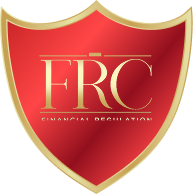Investing in financial markets is one of the best ways to grow wealth over time, but with so many different approaches available, it can be challenging to decide which strategy to choose. Two of the most popular strategies are passive investing and active investing. Each has its own merits, depending on an investor’s goals, risk tolerance, and time horizon. Understanding the differences between these two approaches is crucial for making informed investment decisions that align with your financial objectives.
In this article, we will dive deep into both passive and active investing strategies, exploring their definitions, benefits, drawbacks, and the types of investors who may benefit most from each. By the end, you should have a clearer understanding of which approach may be best suited to help you achieve your investment goals.
Passive investing refers to a strategy where investors aim to match the performance of a market index rather than attempting to outperform it. The idea behind passive investing is to invest in a diversified portfolio of assets that reflects the broader market or a specific sector, and hold those investments over the long term.
Unlike active investing, which involves frequent buying and selling of assets to take advantage of market fluctuations, passive investing involves buy-and-hold strategies. The most common form of passive investing is through index funds or exchange-traded funds (ETFs), which aim to replicate the performance of a specific market index, such as the FTSE 100, the S&P 500, or the MSCI World Index.
Long-Term Focus: Passive investing generally involves a long-term buy-and-hold approach, with investors aiming to accumulate wealth gradually through steady market growth.
Low Costs: Since passive investors are not constantly buying and selling securities, they incur lower transaction costs and management fees compared to active investors.
Diversification: Index funds and ETFs provide instant diversification by tracking a wide range of stocks or bonds, which helps reduce the risk associated with individual securities.
Minimal Involvement: Passive investors are not concerned with market timing or short-term fluctuations. Instead, they rely on the belief that, over the long term, the market will grow steadily.
Lower Fees: One of the main advantages of passive investing is its cost-effectiveness. Since index funds and ETFs don’t require active management or frequent trading, they generally have lower expense ratios compared to actively managed funds. Lower fees mean more of your money is working for you.
Consistency and Simplicity: Passive investing offers a simple and straightforward approach, where investors do not need to worry about making frequent decisions on buying or selling securities. They can rely on the performance of the market index, which has historically shown consistent growth over the long term.
Diversification: By investing in index funds or ETFs, passive investors gain exposure to a broad range of stocks, bonds, or other assets, spreading their risk. This diversification reduces the likelihood of large losses due to poor performance from individual securities.
Reduced Risk of Human Error: Passive investing removes the need for investors to make decisions about individual stock picks, market timing, or economic predictions, which can often lead to errors. This strategy relies on market efficiency, trusting that the market’s overall growth will benefit investors in the long term.
Limited Potential for Outperformance: The primary disadvantage of passive investing is that investors are unlikely to outperform the market. Since passive investors track the market index, they will earn returns that mirror the market’s performance, including its ups and downs.
Less Flexibility: Passive investors have little control over which stocks or bonds are included in their portfolio. If the market index includes underperforming or undesirable companies, the investor is still exposed to those assets.
Vulnerability to Market Downturns: During market recessions or economic downturns, passive investors are subject to the same losses as the broader market, as they are not actively adjusting their portfolio to avoid these risks.
Active investing involves making decisions about buying and selling securities in order to outperform the market. Active investors typically rely on a combination of research, analysis, and market timing to select individual stocks, bonds, or other assets that they believe will outperform the market index.
Active investing can be done by individuals or professional fund managers, who often use various strategies, such as value investing, growth investing, or momentum investing, to find undervalued assets or those with strong growth potential.
Frequent Trading: Active investors buy and sell securities regularly to capitalise on short-term market fluctuations and exploit perceived opportunities.
Higher Costs: Active investing usually incurs higher fees due to the need for extensive research, regular trading, and professional management.
Market Timing: Active investors may attempt to predict market trends and adjust their portfolios accordingly. They may sell assets they believe are overvalued or buy those they expect to increase in value.
Increased Risk and Reward: Because active investing involves selecting individual securities, it typically carries higher risk than passive investing. However, it also has the potential for higher returns if the investor makes successful predictions.
Potential for Outperformance: Active investors have the ability to outperform the market by making informed decisions on which stocks or bonds to buy and sell. If successful, active strategies can generate returns that exceed those of a market index.
Flexibility to Adapt to Market Conditions: Active investors can adjust their portfolios to respond to changing market conditions, economic shifts, and company performance. They can avoid underperforming sectors or move into asset classes expected to perform well, offering greater control over portfolio performance.
Opportunities in Niche Markets: Active investing allows investors to focus on niche markets or specific asset classes that may not be fully represented in mainstream indices. This enables access to unique opportunities that may provide higher returns.
Risk Management: Active investors can manage risk more directly by adjusting their portfolios during market downturns or when they foresee significant risk factors. This ability to change exposure to certain sectors or assets can protect against large losses.
Higher Costs: The most significant downside to active investing is the higher cost. Frequent trading results in higher transaction fees, while active funds tend to have higher management fees. Over time, these costs can erode potential returns, especially if the investment manager underperforms the market.
Risk of Human Error: Active investing relies heavily on the judgment and analysis of the investor or fund manager. Poor decisions, incorrect market predictions, or emotional trading can lead to significant losses.
Time-Consuming: Active investing requires a considerable amount of time, effort, and expertise. Investors must stay on top of market news, economic data, and company performance, making it more demanding than passive investing.
Inconsistent Results: The ability to consistently outperform the market is challenging, and many active fund managers do not consistently beat the index after accounting for fees and expenses. Over time, this can result in disappointing returns for investors who are unable to select superior managers or make successful investment choices.
Passive Investing: Generally involves lower fees, as it requires minimal trading and management.
Active Investing: Higher fees due to frequent trading and active management by fund managers or individual investors.
Passive Investing: Offers stable long-term growth but lacks the ability to outperform the market.
Active Investing: Provides potential for higher returns but comes with increased risk and a higher chance of underperformance.
Passive Investing: Relies on tracking an index and holding assets for the long term.
Active Investing: Involves researching and selecting individual securities, often changing positions based on market conditions.
Passive Investing: Ideal for those who prefer a hands-off approach, have a long-term horizon, and are looking for low-cost, diversified exposure to the market.
Active Investing: Suitable for investors who are willing to take on higher risk in the hopes of outperforming the market, and those who have the time, resources, or expertise to make informed decisions.
The best strategy between passive and active investing depends on your investment goals, risk tolerance, time horizon, and personal preferences.
If your primary goal is to build wealth over the long term with minimal fees and effort, passive investing may be the best choice. This approach is well-suited for individuals who don’t have the time or expertise to monitor the markets closely but still want to benefit from the general growth of the market.
If you’re a beginner or someone who prefers a more hands-off approach to investing, passive investing may provide you with the most straightforward and cost-effective path to wealth accumulation.
If you are an experienced investor or willing to dedicate the time and resources needed to research individual securities, active investing may offer the potential for greater returns. However, you should be prepared to bear the higher costs and accept the risk that you may not always outperform the market.
Active investing may be a good fit for those who have specific knowledge of certain industries, markets, or asset classes and are confident in their ability to make informed decisions based on research and analysis.
Both passive and active investing have their advantages and drawbacks, and the choice between the two largely depends on your personal circumstances and goals. Passive investing offers a low-cost, diversified, and simple strategy that can be highly effective for long-term growth. On the other hand, active investing provides the
potential for higher returns and greater flexibility but comes with higher costs, increased risk, and the need for more time and expertise.
Ultimately, many investors may choose a combination of both strategies to balance risk and reward. By incorporating both passive index-based funds and actively managed investments, investors can achieve a well-rounded portfolio that aligns with their long-term financial goals and risk tolerance. Whether you prefer a passive or active approach, understanding the benefits and trade-offs of each strategy is essential for making informed decisions and building a successful investment strategy for the future.
Be the first to know about new class launches and announcements.


Financial writer and analyst Ron Finely shows you how to navigate financial markets, manage investments, and build wealth through strategic decision-making.
